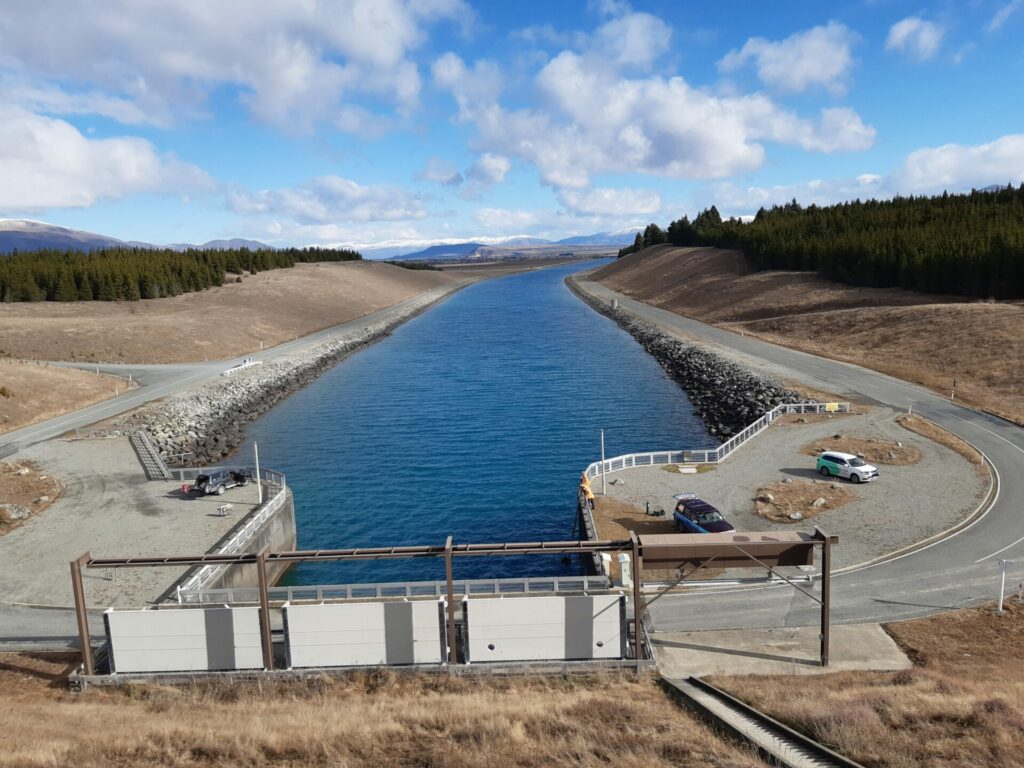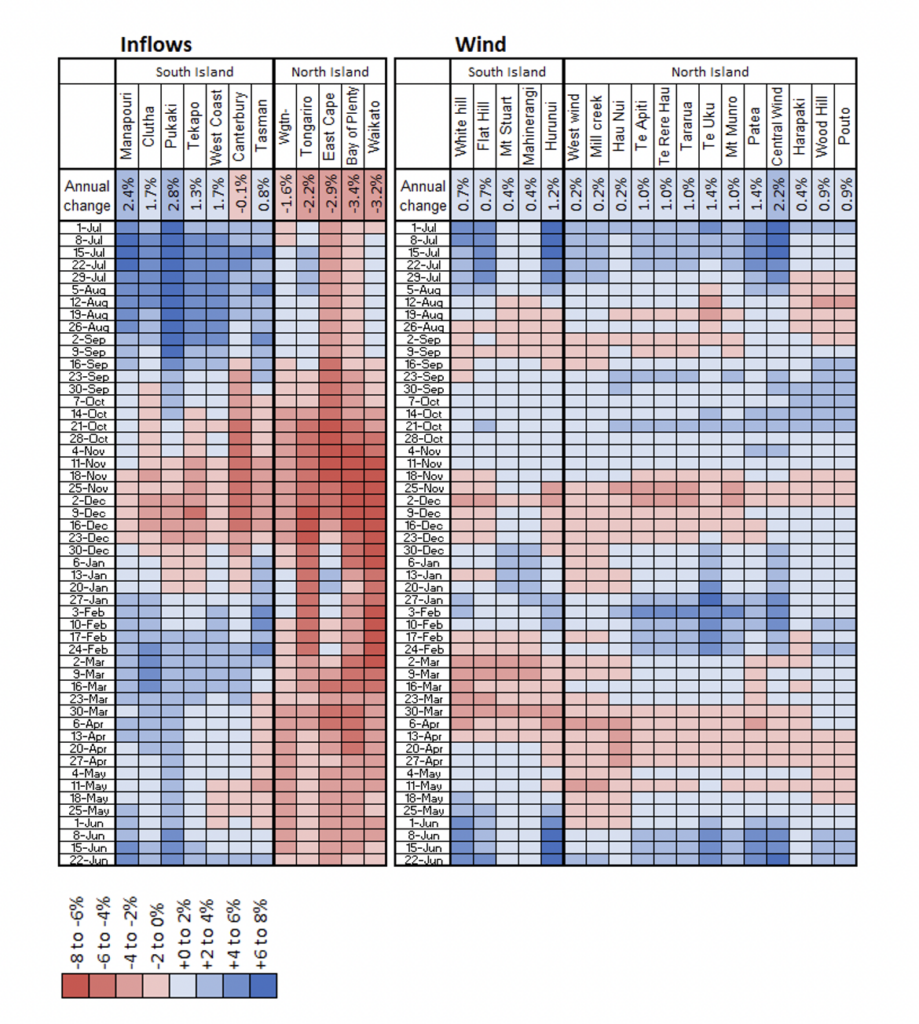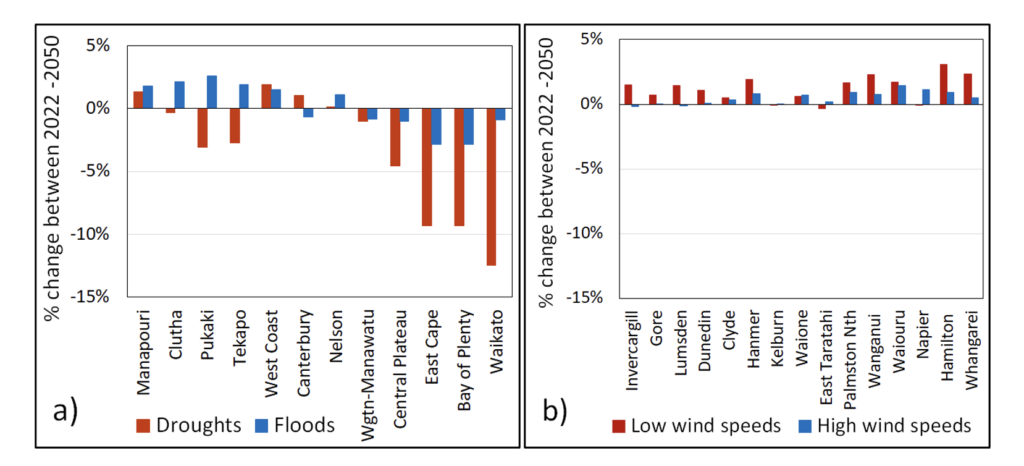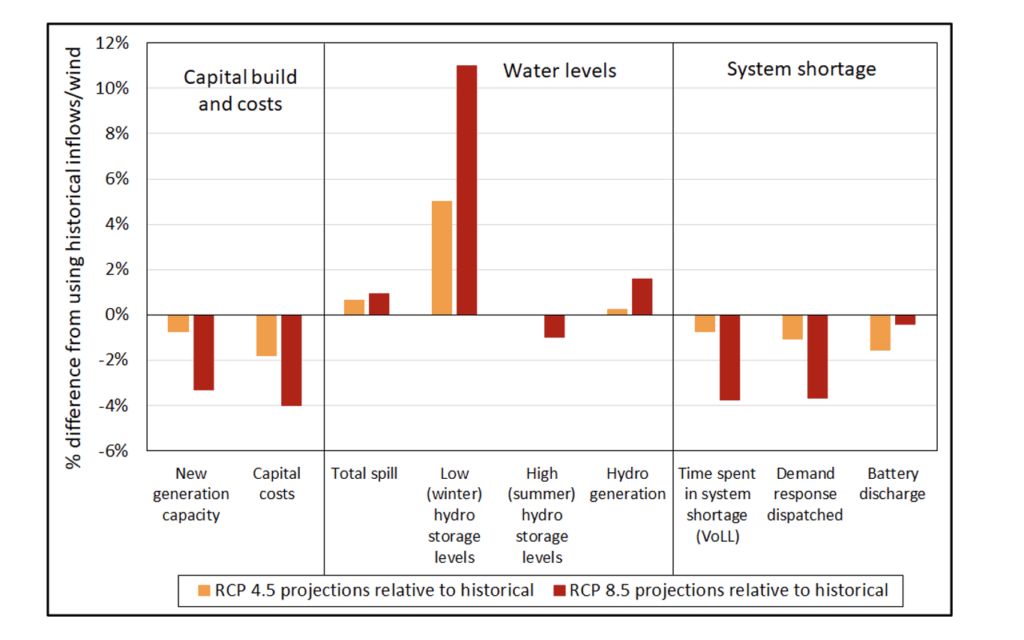- AUTHORJennifer Purdie
Impact of a changing climate on our energy system

Decarbonising our economy is leading to electrification of both transport and industry, resulting in a doubling of electricity demand in New Zealand in the next 30 years (BCG 2022). Significant new electricity generation will primarily consist of new wind and solar farms, as these have very low emissions and are now the cheapest new forms of electricity generation. The proportion of renewable electricity in our system will increase to close to 100% by the mid-2030s (BCG 2022). Increasing intermittency of supply from variable renewables will mean that when the wind stops blowing and the sun stops shining, we need either storage (e.g. hydro storage, batteries, pumped hydro) or firm dispatchable power (e.g. geothermal) to continue reliable supply. Wind generation is projected to make up ~30% of our electricity mix by 2050 (BCG 2022), and the importance of hydro storage dams will increase, as water can be held back behind the dams when wind and solar supplies are strong, and then used to generate electricity when there is no wind or solar generation available.
However, climate change is going to impact the arrival of these important renewable generation “fuels” as well, and until now this has not been factored into energy models looking out to mid-century. 90 years of historical wind and hydro inflow records are currently used to estimate how much wind and water we are likely to have in 2050, and this assumption is flawed. Climate change impacts on wind and water need to be included in energy planning.
Projected changes to wind and water
This research investigated climate change impacts on the wind and water needed for the energy transition. Projections of wind and water, sourced from Global Climate Models (GCM) and downscaled to local level (Collins 2020, Collins, Montgomery and Zammit) by NIWA scientists (Dr Christian Zammit and Dr Richard Turner), were combined with high resolution electricity system modelling, to explore how changes to wind and water will impact our ability to generate enough renewable electricity to support New Zealand’s decarbonisation goals.
Datasets and guidance from this research allow energy planners to incorporate information they haven’t previously had access to.
Local scale projections show significant changes to both lake inflows and wind speeds by mid-century. On an annual basis, South Island hydro lakes are expected to get wetter and North Island hydro drier over time. Seasonally, the biggest changes between now and 2050 are projected to be 8% higher winter inflows in the big South Island snow-fed catchments (under a middle of the road emission scenario), and 8% lower summer lake inflows in the North Island hydro catchments (see figure 1).
It is projected to get slightly windier everywhere, on an annual basis. Seasonally, winds are expected to get weaker in summer and autumn, and stronger in winter, by mid-century under a mid-range emissions scenario (see figure 1).

Figure 1: Projected % changes to weekly hydro inflows (left) and wind speeds (right) in electricity model regions between 2022 and 2050. Regions/catchments to the left of the black line are in the South Island, regions/catchments to the right of the black line are in the North Island.
Floods are expected to get larger over most of the South Island, and dry periods drier in the biggest hydro catchments. In the North Island, both floods and dry periods are expected to get drier over time. Wind speeds are generally expected to get higher, with both low wind speeds and high wind speeds increasing over time (see figure 2).

Figure 2: Projected % changes to the a) magnitude of flood peaks (change to 95th%ile inflows) and drought depth (change to 5th%ile inflows), and b) to the magnitude of high wind speeds (change to 95th%ile wind speed) and low wind speeds (change to 5th%ile wind speed) for various New Zealand regions, between 2022 and 2050.
Electricity system modelling
The New Zealand electricity system is generally modelled out to 2050 using a long history of past hydro lake inflows and wind speeds. For this research, projections of future water and wind were put through an industry sourced electricity system model (on licence from Meridian Energy Ltd). Three scenarios were modelled:
- Using historical hydro inflows and wind records.
- Using RCP 4.5, mid-range, emissions scenarios projections of wind and water.
- Using RCP 8.5, high-range, emissions scenarios projections of wind and water.
b) and c) (above) are hereafter referred to as the “climate change scenarios”. All other model assumptions were kept the same (generation plant, transmission grid, and demand side climate change impacts such as electrification of transport and industry, changes to heating and ventilation load, doubling of demand and large build programme of new generation).
Results showed that increases to wind and water under the climate change scenarios led to a slightly reduced need for new generation capacity (and subsequent new build capital costs). Although this was a small percentage change (2-4% reduction in costs), this is significant considering that $42 billion is expected to be spent by 2030 on new infrastructure in the energy system (BCG 2022). This equates to about one less wind (or solar) farm under a mid-range emissions scenario, and four less farms under a high range emissions scenario.
As flood peaks get bigger under the climate change scenarios, more hydro water is spilt down spillways without being used for generation, and spill is more likely to occur through much of the year, instead of being mostly confined to summer (as it is now). Hydro generation increases under these scenarios, as more water is expected overall. Less range of hydro storage is used (as incoming water shifts out of summer and into winter, when it is needed), especially in late winter.
The seasonal and geographical changes to wind and water led to less system shortages in the climate change scenarios (and therefore less demand response and battery use).

Figure 3: Changes in modelled electricity system by 2050, relative to using historical wind and water.
Future work
Climate change is already having a significant and quantifiable impact on the world around us, and now that reliable projections are available, it is important that this information is included in planning for significant infrastructure development in New Zealand. There is significant variability around projections of the future of the New Zealand electricity system, with many moving parts, but to provide more certainty to infrastructure developers and government agencies, information from this research should be included in New Zealand energy planning.
References
Ackerley, D.; Dean, S.; Sood, A.; Mullan, A.B. 2012 Regional climate modelling in New Zealand: Comparison to gridded and satellite observations. Weather Clim. 2012, 32, 3–22.
Boston Consulting Group 2022: The Future is Electric. A Decarbonisation Roadmap for New Zealand’s Electricity Sector. 206pp. https://web-assets.bcg.com/b3/79/19665b7f40c8ba52d5b372cf7e6c/the-future-is-electric-full-report-october-2022.pdf
Collins, Daniel B. G. 2020: New Zealand River Hydrology under late 21st Century Climate Change. Water 2020, 12, 2175; doi:10.3390/w12082175.
Collins, D., Montgomery, K. & Zammit, c. 2018 Hydrological projections for New Zealand rivers under climate change – Prepared for Ministry for the Environment, June 2018, 108pp. https://environment.govt.nz/assets/Publications/Files/Hydrological-projections-report-final.pdf
Other resources
A printable pdf version of this project summary can be downloaded below.
A policy relevant summary can be found here.
Watch Jen present her research here.